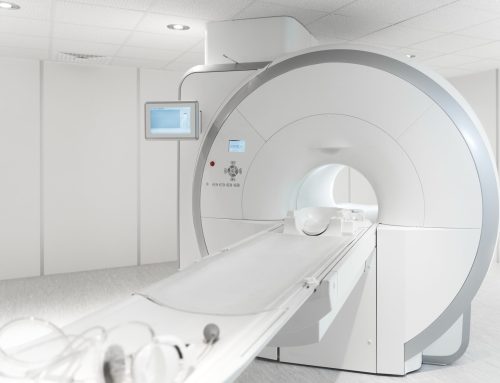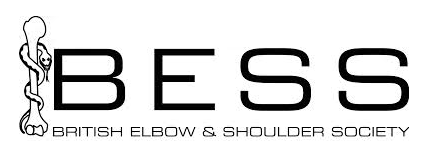Navigating the Slopes: A Comprehensive Guide to Skiing Shoulder Injuries
Whether you are a seasoned expert, or an anxious beginner, skiing and snowboarding offer the thrill of an adrenaline-pumping adventure down snow-covered slopes. I have skied myself on and off for over 20 years, but I still consider myself a perpetual beginner, as I do not seem to get over the ‘fear’ in my head. Part of my trepidation is the result of sitting opposite the ‘chair of silly mistakes’ in my orthopaedic consulting room and hearing all the stories of how people get injured on the mountain.
In this article, I will delve into the mechanisms, common injuries, preventive measures, and treatment options associated with ski-related shoulder injuries.
Understanding the Mechanics
Skiing imposes unique demands on the body, particularly the shoulders, as the upper extremities play a crucial role in maintaining balance and executing precise manoeuvres. Additionally, skiers often use their arms for stability, steering, and braking, placing the shoulder joints in a position of constant stress. During a fall, the shoulders act as shock absorbers for the impact and safeguard the head and neck from the brunt of the force.
Common reasons for why people get injured include:
– Going too fast, lost control and the skis would not come off
– Caught a pile of snow with the edge of the ski and lost balance
– Poor visibility conditions due to snowing
– Very icy and fell heavily on hard ice
– Snow was very slushy, and the skis got stuck in snow
– Mistimed the chair lift
– Someone else crashed into you
All of the above have happened to me on more than one occasion – as I said, despite having been skiing over 8 times, I still haven’t grasped it properly yet!
Common Shoulder Injuries in Skiing
1. Rotator Cuff Tears
Mechanism: Sudden falls or collisions can result in the tearing of the rotator cuff, a group of muscles and tendons that stabilise the shoulder joint.
Symptoms: Pain and weakness when lifting the arm are typical indicators of a rotator cuff tear.
2. Acromioclavicular (AC) Joint Injuries
Mechanism: Impact on an outstretched arm or a direct blow to the shoulder may lead to AC joint injuries.
Symptoms: Pain in the upper arm and top of the shoulder, swelling, and sometimes a visible deformity characterise AC joint injuries.
3. Shoulder Dislocations
Mechanism: High-velocity falls or collisions can cause the shoulder to dislocate, requiring prompt medical attention.
Symptoms: Intense shoulder pain, deformity, and the inability to move the affected arm are common signs of shoulder dislocations.
4. Fractures
Mechanism: With sufficient force, any bone can break. The most commonly broken bones related to a ski injury are the humerus and clavicle (collarbone) – the latter usually occurring after a fall directly onto the shoulder. Not all fractures need fixing, it depends on the location of the fracture and the displacement of the bone ends.
Symptoms – Intense pain, deformity, and the inability to move the affected arm are common signs of a fracture.
Preventive Measures
- Fitness
Skiing is a physically demanding sport that requires considerable stamina. Improving your cardiovascular fitness before you go on holiday will prevent early fatigue.
Strengthening Exercises
Skiing is tough on your legs. Prepare for your trip by improving your lower body strength with exercises such as squats.
Implementing a targeted exercise routine to strengthen the shoulder muscles can also reduce the risk of injuries.
- Proper Technique and Posture
Take skiing lessons to learn proper techniques. Maintaining correct posture while skiing can significantly decrease the likelihood of shoulder injuries.
Remember that it’s just as important to learn how to stop as it is to start!
- Appropriate Gear
Wearing well-fitted protective gear provides an additional layer of defence against injuries.
Always wear a helmet – even if you are an expert. The images of young women gliding down the slopes with their long hair waving glamorously in the wind behind them belong to the 1980s. It’s not worth the risk – skiing can be life-threatening if you sustain a head injury, so be smart not cool!
Treatment Options
This depends on the severity of the injury. Most ski resorts are well-equipped with medical treatment centres to deal with acute injuries and many offer on-site surgery. If you have a fracture and the bone has penetrated through the skin, then it is advisable, to thoroughly clean the wound, fix the bone and close the skin. If any major blood vessels or nerves haev been damaged, this is also an indication to fix the fracture immediately. Other injuries can wait to be treated on returning home.
1. Non-surgical Treatments
Mild to moderate shoulder injuries can often be managed with rest, ice, compression, and analgesia such as paracetamol and ibuprofen. If the pain is more severe, you may need stronger medication such as codeine or naproxen from a clinic.
If you have dislocated your shoulder, this needs to be relocated as soon as possible to avoid damaging the nerves and blood vessels to your arm.
2. Surgical Interventions
Severe injuries, such as complete rotator cuff tears or recurrent shoulder dislocations, may need surgical intervention. It is best to get further imaging, such as an MRI or CT scan, to assess the extent of the damage. I prefer using arthroscopic (keyhole) techniques to treat these types of injuries, but more severe injuries may need open surgery.
3. Rehabilitation and Physiotherapy
Regardless of whether surgery is needed, physiotherapy for guided rehabilitation plays a pivotal role in restoring strength, flexibility, and functionality to the injured shoulder.
Conclusion
Skiing is undeniably thrilling, but it involves its fair share of risks, particularly when it comes to shoulder injuries.
Whilst I do not wish to discourage anyone from enjoying sports, I would encourage them to take sensible precautions to avoid an injury.
If you do take a tumble, and are in pain or cannot move your arm, seek medical advice immediately, and treat the emergency. Then get home safely and book an appointment with me so that I can assess your shoulder and organise some imaging if needed. It’s better to be fully informed by an orthopaedic surgeon and take action rather than suffering in pain.
I wish you happy skiing and hope that all you bring home from the slopes is memories, not injuries.
Ms Susan Alexander is a Consultant Orthopaedic Surgeon and President of the Independent Doctors Federation.
She specialises in all shoulder conditions, including frozen shoulder, rotator cuff tears, dislocations and arthritis. Based in London, she practises at Fortius Clinic and King Edward VII’s Hospital. Ms Alexander is highly experienced in minimally invasive (keyhole) shoulder surgery and is known for her meticulous, patient-centred and holistic approach.
She focuses on accurate diagnosis, bespoke treatment planning, and ongoing support throughout recovery. Learn more about Ms Susan Alexander here.









